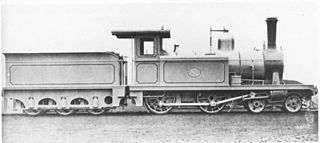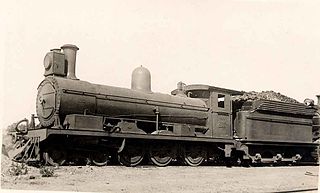| OVGS 6th Class L2 4-6-0 CSAR Class 6-L2 4-6-0 South African Class 6C 4-6-0 | |||||||||||||||||||||||||||||||||||||||||||||||||||||||||||||||||||||||||||||||||||||||||||||||||||||||||
|---|---|---|---|---|---|---|---|---|---|---|---|---|---|---|---|---|---|---|---|---|---|---|---|---|---|---|---|---|---|---|---|---|---|---|---|---|---|---|---|---|---|---|---|---|---|---|---|---|---|---|---|---|---|---|---|---|---|---|---|---|---|---|---|---|---|---|---|---|---|---|---|---|---|---|---|---|---|---|---|---|---|---|---|---|---|---|---|---|---|---|---|---|---|---|---|---|---|---|---|---|---|---|---|---|---|
 OVGS 6th Class L2 no. 88, CSAR Class 6-L2 no. 364, SAR Class 6C no. 553, with a Belpaire firebox and bogie tender | |||||||||||||||||||||||||||||||||||||||||||||||||||||||||||||||||||||||||||||||||||||||||||||||||||||||||
| |||||||||||||||||||||||||||||||||||||||||||||||||||||||||||||||||||||||||||||||||||||||||||||||||||||||||
| |||||||||||||||||||||||||||||||||||||||||||||||||||||||||||||||||||||||||||||||||||||||||||||||||||||||||
| |||||||||||||||||||||||||||||||||||||||||||||||||||||||||||||||||||||||||||||||||||||||||||||||||||||||||
| |||||||||||||||||||||||||||||||||||||||||||||||||||||||||||||||||||||||||||||||||||||||||||||||||||||||||
The South African Railways Class 6C 4-6-0 of 1896 was a steam locomotive from the pre-Union era in the Orange Free State.
Contents
- Manufacturers
- Service
- South Africa
- Sudan
- Class 6 sub-classes
- Renumbering
- Preservation
- Illustration
- References
Between 1895 and 1898, the Oranje-Vrijstaat Gouwerment-Spoorwegen placed 24 new Cape 6th Class steam locomotives with a 4-6-0 Tenwheeler type wheel arrangement in service, designated 6th Class L2. When British forces invaded the Orange Free State during the Second Boer War, these locomotives were taken over by the Imperial Military Railways. After the war, they were renumbered onto the Central South African Railways roster and designated Class 6-L2. In 1912, when the remaining 23 locomotives were assimilated into the South African Railways, they were renumbered again and designated Class 6C. [1] [2] [3]




















